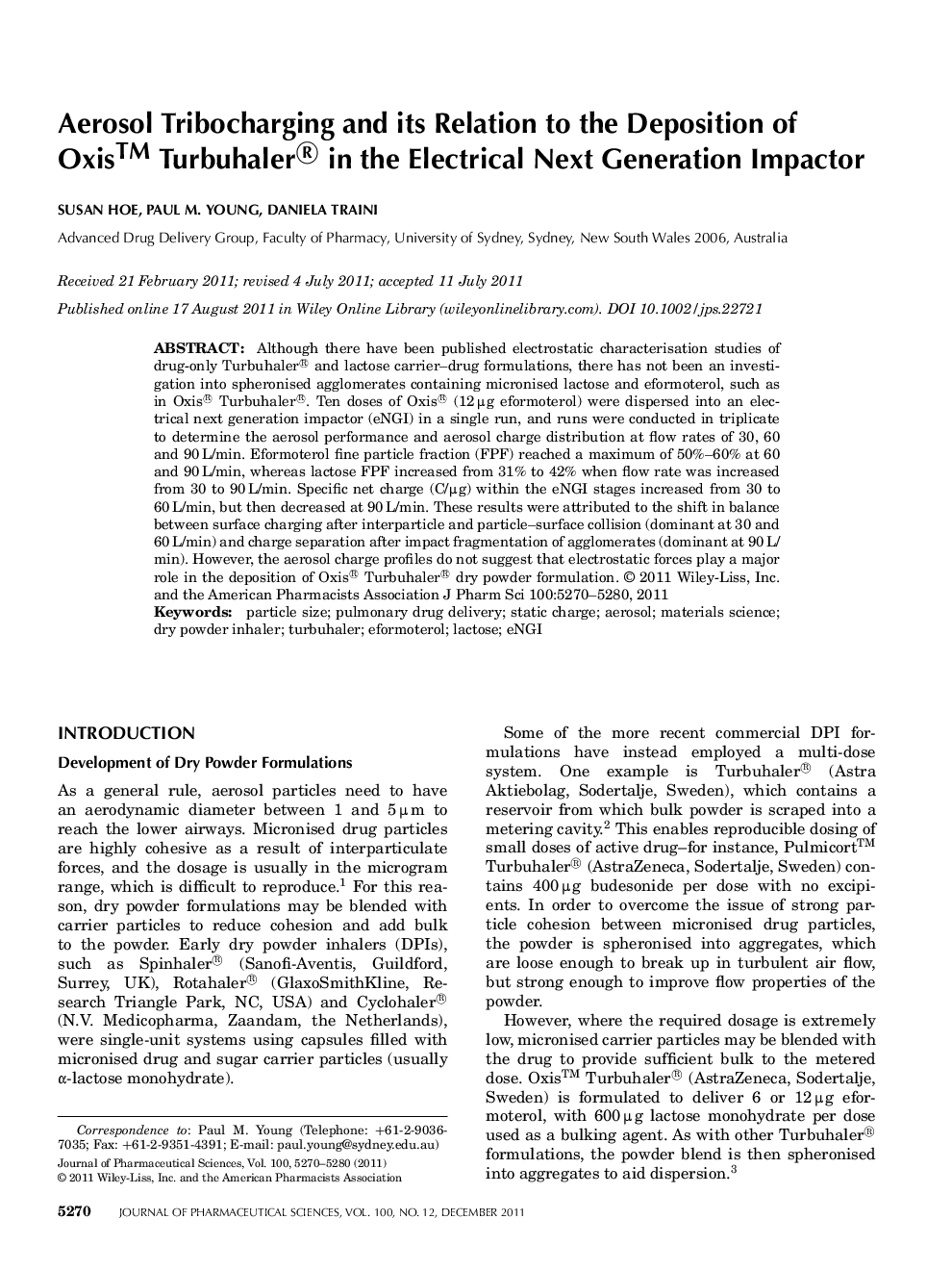| Article ID | Journal | Published Year | Pages | File Type |
|---|---|---|---|---|
| 2486146 | Journal of Pharmaceutical Sciences | 2011 | 11 Pages |
Abstract
Although there have been published electrostatic characterisation studies of drugâonly Turbuhaler® and lactose carrier-drug formulations, there has not been an investigation into spheronised agglomerates containing micronised lactose and eformoterol, such as in Oxis® Turbuhaler®. Ten doses of Oxis® (12 µ g eformoterol) were dispersed into an electrical next generation impactor (eNGI) in a single run, and runs were conducted in triplicate to determine the aerosol performance and aerosol charge distribution at flow rates of 30, 60 and 90 L/min. Eformoterol fine particle fraction (FPF) reached a maximum of 50%-60% at 60 and 90 L/min, whereas lactose FPF increased from 31% to 42% when flow rate was increased from 30 to 90 L/min. Specific net charge (C/µ g) within the eNGI stages increased from 30 to 60 L/min, but then decreased at 90 L/min. These results were attributed to the shift in balance between surface charging after interparticle and particle-surface collision (dominant at 30 and 60 L/min) and charge separation after impact fragmentation of agglomerates (dominant at 90 L/min). However, the aerosol charge profiles do not suggest that electrostatic forces play a major role in the deposition of Oxis® Turbuhaler® dry powder formulation.
Keywords
Related Topics
Health Sciences
Pharmacology, Toxicology and Pharmaceutical Science
Drug Discovery
Authors
Susan Hoe, Paul M. Young, Daniela Traini,
